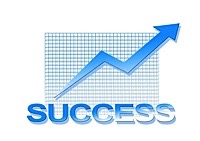 Entrepreneurs think differently from other people. When technological changes make existing products obsolete, demographic and social changes alter attitudes, and political and regulatory changes adjust the playing field, most people complain. Entrepreneurs come up with solutions.
Entrepreneurs think differently from other people. When technological changes make existing products obsolete, demographic and social changes alter attitudes, and political and regulatory changes adjust the playing field, most people complain. Entrepreneurs come up with solutions.
The Transportation Security Administration’s (TSA) introduction of the backscatter scanner and enhanced airport pat downs is a case in point. John Tyner became the latest Internet celebrity for his response to the new security procedures – the “Don’t Touch My Junk” –watch the video. Others opposed to the new rules sought to trigger a pre-Thanksgiving opt out to draw attention to the new measures. And the vast majority of Americans either grumbled their complaints or stoically accepted the latest indignity of air travel in the post 9/11 age.

 It seems we’ll go to any lengths these days to find inspiration and guidance, particularly when it comes to the subject of how to behave at work. Whether it’s the cool-headed planning of
It seems we’ll go to any lengths these days to find inspiration and guidance, particularly when it comes to the subject of how to behave at work. Whether it’s the cool-headed planning of  I’ve spent the last week in Santiago, a guest of Professor
I’ve spent the last week in Santiago, a guest of Professor  The scene on the penthouse level of the Liberty Building downtown feels partly like a college house party: a game of "DJ Hero," coolers of beer, and side conversations going on in different rooms - one room that features an entire wall turned into a whiteboard.
The scene on the penthouse level of the Liberty Building downtown feels partly like a college house party: a game of "DJ Hero," coolers of beer, and side conversations going on in different rooms - one room that features an entire wall turned into a whiteboard. HONG KONG — The United States is too reliant on China for minerals crucial to new clean energy technologies, making the American economy vulnerable to shortages of materials needed for a range of green products — from
HONG KONG — The United States is too reliant on China for minerals crucial to new clean energy technologies, making the American economy vulnerable to shortages of materials needed for a range of green products — from  Need extra cash to move your business forward? Maybe you want to hire new people, buy a building, expand your inventory, or take your business to the next level, whatever that may be.
Need extra cash to move your business forward? Maybe you want to hire new people, buy a building, expand your inventory, or take your business to the next level, whatever that may be.  I was recently speaking with some founders about their fund raising process. They had received a term sheet from a VC and were wondering whether to work with this firm. I personally had three separate data points from entrepreneurs who took money from the firm that said “never again.”
I was recently speaking with some founders about their fund raising process. They had received a term sheet from a VC and were wondering whether to work with this firm. I personally had three separate data points from entrepreneurs who took money from the firm that said “never again.” If you are new to the startup space and angel investing, you probably don’t realize that some groups of angel investors charge entrepreneurs a fee to pitch to their groups. This practice has caused a rousing debate among key players, with some calling it a scam, and others defending it as necessary to cover expenses.
If you are new to the startup space and angel investing, you probably don’t realize that some groups of angel investors charge entrepreneurs a fee to pitch to their groups. This practice has caused a rousing debate among key players, with some calling it a scam, and others defending it as necessary to cover expenses. Infections resulting from joint-replacement surgeries are costly and potentially deadly. Now researchers at MIT are developing coatings for medical implants that can be loaded with multiple drugs, including antibiotics that are released over time. The process involves layering antibiotic films, which are released over the short term, onto a permanently antibacterial polymer designed to prevent infection over the long term.
Infections resulting from joint-replacement surgeries are costly and potentially deadly. Now researchers at MIT are developing coatings for medical implants that can be loaded with multiple drugs, including antibiotics that are released over time. The process involves layering antibiotic films, which are released over the short term, onto a permanently antibacterial polymer designed to prevent infection over the long term. Becoming your own boss has sort of gained a global appeal. These days many people start up their own businesses for virtually any reason. Somehow it doesn’t seem to count anymore what led people to go into business, going into business has suddenly become the new mantra of the 21st century. Obviously, there are several factors owing to this global trend some of which are; the emergence of the Internet, the unreliability of job security, the God-like attention given to successful entrepreneurs, the rise of the knowledge worker and so on. In the end, it’s not the number of businesses that are being started that matters, but the number of businesses that thrive.
Becoming your own boss has sort of gained a global appeal. These days many people start up their own businesses for virtually any reason. Somehow it doesn’t seem to count anymore what led people to go into business, going into business has suddenly become the new mantra of the 21st century. Obviously, there are several factors owing to this global trend some of which are; the emergence of the Internet, the unreliability of job security, the God-like attention given to successful entrepreneurs, the rise of the knowledge worker and so on. In the end, it’s not the number of businesses that are being started that matters, but the number of businesses that thrive. Entrepreneurship is now a pretty big deal. Business schools all over the world have courses in this area and some even make it their major focus of teaching and research. Governments are also interested in entrepreneurs and routinely ask themselves how they can develop a more entrepreneurial national culture. Many years ago, an economist called Schumpeter recognized that risk taking and trying new technologies and business ideas was essential for economic growth. However, the current fascination with entrepreneurs would have even surprised Schumpeter.
Entrepreneurship is now a pretty big deal. Business schools all over the world have courses in this area and some even make it their major focus of teaching and research. Governments are also interested in entrepreneurs and routinely ask themselves how they can develop a more entrepreneurial national culture. Many years ago, an economist called Schumpeter recognized that risk taking and trying new technologies and business ideas was essential for economic growth. However, the current fascination with entrepreneurs would have even surprised Schumpeter. Call it the Imagine Diet. You wouldn’t have to count
Call it the Imagine Diet. You wouldn’t have to count  "Thank goodness for muscle memory," I told my wife early last Tuesday morning. She looked at me quizzically (this is not all that unusual). I went on to explain how muscle memory was going to be my saving grace that day.
"Thank goodness for muscle memory," I told my wife early last Tuesday morning. She looked at me quizzically (this is not all that unusual). I went on to explain how muscle memory was going to be my saving grace that day. Organizations use a variety of tools to motivate employees to participate in their innovation efforts.
Organizations use a variety of tools to motivate employees to participate in their innovation efforts. LANSING – Ann Arbor SPARK President and CEO Michael Finney will take on that role for the entire state, named today by Gov.-elect Rick Snyder to run the daily operations of the Michigan Economic Development Corp. In a joint press conference with Gov. Jennifer Granholm, Snyder also announced that Doug Rothwell, who ran the agency in the Engler administration, would chair the MEDC's 20-member executive committee.
LANSING – Ann Arbor SPARK President and CEO Michael Finney will take on that role for the entire state, named today by Gov.-elect Rick Snyder to run the daily operations of the Michigan Economic Development Corp. In a joint press conference with Gov. Jennifer Granholm, Snyder also announced that Doug Rothwell, who ran the agency in the Engler administration, would chair the MEDC's 20-member executive committee. MONTPELIER — State and local officials on Thursday formally announced e-Corp English’s plans to grow in Middlebury and confirmed details of a state aid package that helped woo the English-language training company to Addison County’s shire town.
MONTPELIER — State and local officials on Thursday formally announced e-Corp English’s plans to grow in Middlebury and confirmed details of a state aid package that helped woo the English-language training company to Addison County’s shire town. Toronto-based leadership coach
Toronto-based leadership coach  Connect, the San Diego non-profit group dedicated to supporting technology innovation and entrepreneurism, named the winners of its “Most Innovative New Product” awards at a luncheon ceremony Friday. This year, San Diego’s innovation community nominated more than 100 new products—a record number of nominees—which prompted Connect CEO Duane Roth to note in a statement that “the true measure of an innovation economy is the volume of research that translates into successful products.”
Connect, the San Diego non-profit group dedicated to supporting technology innovation and entrepreneurism, named the winners of its “Most Innovative New Product” awards at a luncheon ceremony Friday. This year, San Diego’s innovation community nominated more than 100 new products—a record number of nominees—which prompted Connect CEO Duane Roth to note in a statement that “the true measure of an innovation economy is the volume of research that translates into successful products.” Happy and healthy employees contribute largely to a business' success. As CEO, you may not have complete control over the atmosphere of the office. In fact, how many endorphins your employees have may depend on where the office is located.
Happy and healthy employees contribute largely to a business' success. As CEO, you may not have complete control over the atmosphere of the office. In fact, how many endorphins your employees have may depend on where the office is located.
 One of the most important attributes of a patent is its term or duration of enforceability. In 1995, the US patent system began calculating patent term based on the priority filing date of an application rather than a patent's issue date. Under the prior rule, a patent would remain in force for 17 years from the date of issue. Under the “new” system, the term is 20–years from the priority filing date. The three extra years were intended to account for a typical prosecution delay of three years. In addition, Congress added a patent-term-adjustment (PTA) provision to lengthen the patent term in instances where the USPTO unduly delayed in issuing a patent.
One of the most important attributes of a patent is its term or duration of enforceability. In 1995, the US patent system began calculating patent term based on the priority filing date of an application rather than a patent's issue date. Under the prior rule, a patent would remain in force for 17 years from the date of issue. Under the “new” system, the term is 20–years from the priority filing date. The three extra years were intended to account for a typical prosecution delay of three years. In addition, Congress added a patent-term-adjustment (PTA) provision to lengthen the patent term in instances where the USPTO unduly delayed in issuing a patent.